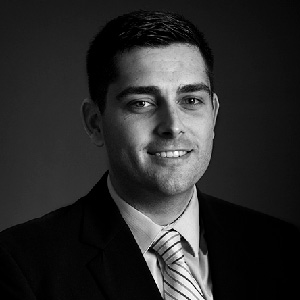Forensic accounting and business valuation professionals often serve as economic damages experts and play an important role in litigation where a plaintiff seeks to recover economic damages due to wrongful actions of a defendant. In the article below, we discuss some of the basics of quantifying lost profits, which is generally claimed as an element of economic damages in a litigation setting.
A Simplistic Formula
To calculate lost profits under the two-step approach, damages experts must subtract actual profits from profits that would have been realized “but for” the harmful event (i.e., gross revenue less avoided costs).
Avoided costs are the incremental costs the plaintiff did not incur due to the lost revenue. The damages expert must also calculate interest on prejudgment lost profits and apply discounts to projected lost profits, if necessary. Below is a simplified formula that helps to illustrate the lost profits element of an economic damages calculation
1:
| Profits before trial, “but for” the harmful event |
– |
Actual profits before trial |
+ |
Prejudgment interest |
= |
Lost profits and prejudgment interest before trial |
|
|
|
|
|
|
+ |
| Projected profits after trial, “but for” the harmful event |
– |
Projected profits that will likely be realized after trial |
– |
Discounting |
= |
Lost Profits after trial |
|
|
|
|
|
|
Total lost profits and prejudgement interest |
Causation
In order to recover damages, the plaintiff must be able to demonstrate “proximate cause,” which the American Institute of Certified Public Accountants defines as “an act from which an injury results as a natural, direct, uninterrupted consequence and without which the injury would not have occurred.” If the plaintiff can demonstrate proximate cause, the losses sustained by the plaintiff must be quantified.
2
The primary goal of the damages expert is to isolate the loss that was caused by the wrongful act, which can be a complex task since unrelated factors can also affect a plaintiff’s earnings. Factors such as economic conditions, industry trends, commodity pricing, seasonality, competition, and natural disasters can all impact a company’s financial performance. Therefore the damages expert must not only study the evidence that demonstrates proximate cause, but must also consider alternative causation for a plaintiff’s loss. If the damages expert factors in such variables during calculations, he or she must include supporting evidence as part of the analysis.
In many cases, the defendant will engage its own damages expert to analyze the causal links between the plaintiff’s loss and the wrongful act in order to determine whether losses can be partially attributed to factors unrelated to the plaintiff’s claim. Opposing experts typically provide their own economic damages calculations and will often provide a rebuttal report that explains flaws in the adversary’s methods and analysis.
Loss Period
The damages expert must determine the time period during which damages were incurred. This period normally starts no earlier than the date of the harmful event, and the end of the loss period can vary. In cases involving a breach of contract, the loss period is generally measured through the date on which the business returns to normal customary levels or the end of the term of the contract. Challenges with measuring the loss period can arise in cases in which contract renewals may have been reasonably expected. These renewal periods are more likely to be awarded when there is a history of renewals and extensions are provided for in the contract.
In cases involving tort claims or franchise contracts, the loss period is measured through the date on which the business returns to normal customary levels or the “foreseeable” period. The longer the foreseeable period, the greater the risk that the damage claims will not meet the certainty and foreseeability tests, and consequently, that the courts will be reluctant to award those damages.
The return of a business to normal levels can generally be viewed as the point at which the business restores itself to a position consistent either with pre-event levels or with levels that would have been anticipated given alternate causations.
Certainty
Damages experts are not expected to calculate a precise amount of economic damages, but they must prove that the damages related to lost profits are reasonable and that they have been calculated using reliable factors without undue speculation. It is the responsibility of both the attorney and the damages expert to ensure that the assumptions used to calculate economic damages are in line with the facts of the case. Consistency from this standpoint is necessary to establish a damages amount with reasonable certainty.
Is Your Damages Expert Qualified?
The opposing party will critique your expert’s analysis and attempt to discredit the findings that your expert presents in court. Therefore, choosing a professional who lacks the proper qualifications can be costly.
The damages expert will likely possess a variety of education, training, experience, and skills that are relevant to quantify the lost profits element of an economic damages case. There are many key factors to consider when determining if a professional is qualified. As we’ve discussed in a previous article
about identifying qualified experts, an individual’s work history, track record of testifying in court, and industry knowledge are also important factors.
1 Reference Manual on Scientific Evidence, Federal Judicial Center
2 Calculating Lost Profits, AICPA Business Valuation and Forensic & Litigation Services Section
This document is for informational use only and may be outdated and/or no longer applicable. Nothing in this publication is intended to constitute legal, tax, or investment advice. There is no guarantee that any claims made will come to pass. The information contained herein has been obtained from sources believed to be reliable, but Mariner Capital Advisors does not warrant the accuracy of the information. Consult a financial, tax or legal professional for specific information related to your own situation.









